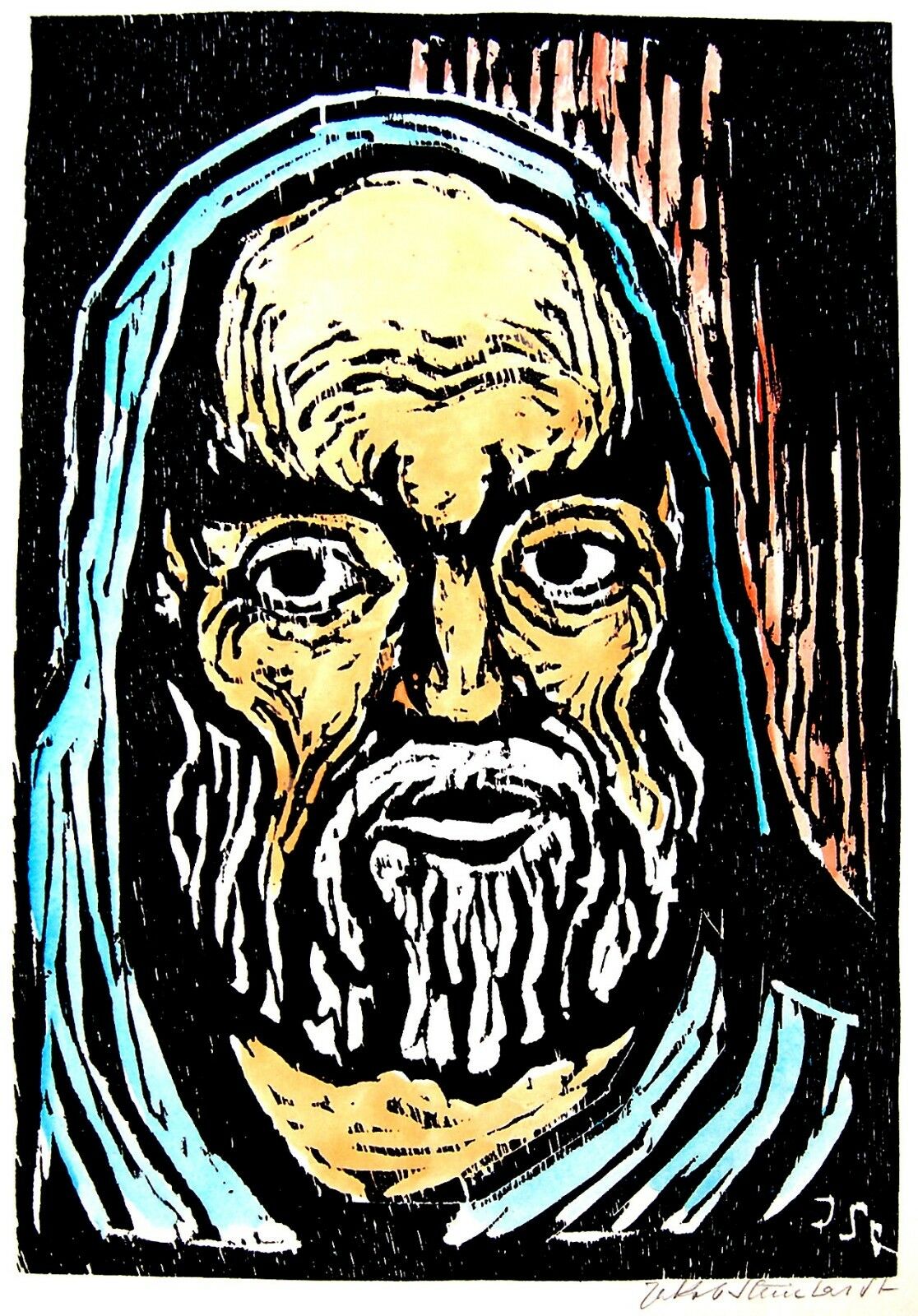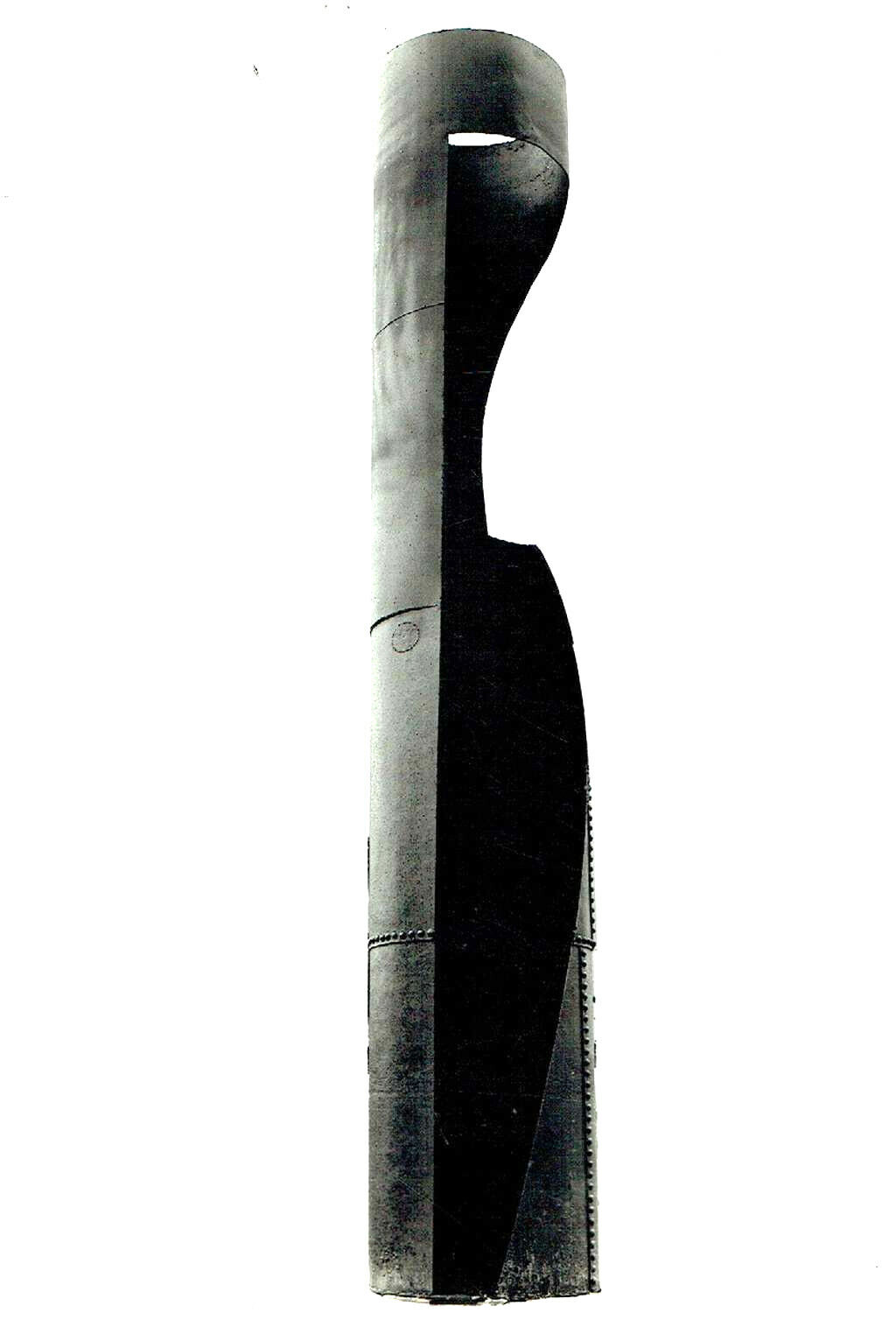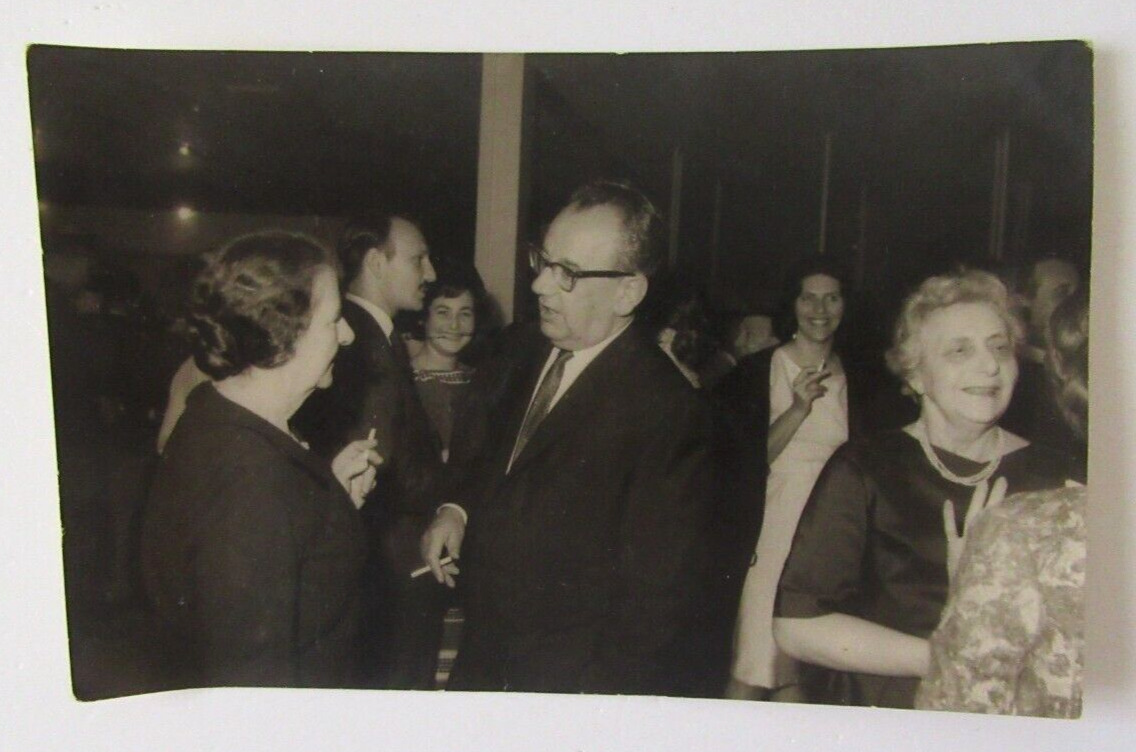-40%
STEINHARDT Bezalel HAND SIGNED Color WOODCUT Bible JEWISH Judaica HEBREW ART
$ 44.88
- Description
- Size Guide
Description
DESCRIPTION:
Here for sale is a QUITE RARE original HAND SIGNED and HAND TINTED Jewish Judaica woodcut of JACOB STEINHARDT . The woodcut depicts an image of a BIBLICAL figure , An anonymous PROPHET or another biblical hero , Perhaps Abraham , Moses , Isaiah , Samuel , Ezekiel , Malachi , Jeremiah or Job. The hand tinted woodblock
was created in the early 1960's. STEINHARD hand signed with pencil " JACOB STEINHARDT " in addition to his signature in initials in the plate "JST". Printed on heavy stock. Sheet dimensions are 12.5 x 18.5 " while the actual WOODCUT size is 9.5 x 14" ( Excluding the pencil signature ). Excellent pristine condition.
( Pls look at scan for accurate AS IS images )
The woodcut will be sent rolled in a special protective rigid sealed tube.
AUTHENTICITY
: This is an ORIGINAL ca 1960's HAND SIGNED and HAND TINTED woodcut , NOT a reproduction or a reprint , It holds a life long GUARANTEE for its AUTHENTICITY and ORIGINALITY.
PAYMENTS
:
Payment method accepted : Paypal .
SHIPPMENT
:
Shipp worldwide via registered airmail is $ 25 . The woodcut will be sent rolled in a special protective rigid sealed tube.
.
Will be sent around 5 days after payment .
Yakov – Jacob Steinhardt was born in the then remote, largely Polish town of Zerkow in the Posen District of Germany. (poland/german) Immigrated 1933. Studies: 1906 School of Art, 1906 Studied in Berlin Arts and Crafts School. Berlin; 1907 painting with Lovis Corinth and engraving and etching with Hermann Struck; advanced studies, 1908-10 Paris, with Henri Matisse and Steinlen; 1911 Italy. Teaching: Bezalel, Jerusalem, 1953-57 Director. 1910 Participated in the “New Sezession”, Berlin. 1912 together with Ludwig Meidner and Janthur he founded the "Pathetiker" group very early in the German expressionist movement. Running afoul of the Nazis, he fled to Tel-Aviv and then Jerusalem in the early 30s, showing in “Der Sturm” Gallery. 1914 Exhibited with ludwig Meidner at first Expressionist Exhibition in Berlin. Worked mainly in woodcuts depicting biblical and other Jewish subjects. 1955-58 International awards for his woodcuts. Yacov Steinhardt receives graphic commissions from Fritz Gurlitt. 1922 Yaacov Steinhardt Marries Minni Gumpert. Active in organizing Secession exhibits. 1925 Trips to Mark Brandenburg and Holy Land. Turns primarily to painting; stops work on etchings and lithographs. 1933 Emigrates to the Palestine. 1934 Moves to Jerusalem and opens an art school; attempts some etchings. 1948 Closes the art school and becomes Chairman of Graphics Department, Bezalel School for Arts and Crafts. 1954-57 Director of Bezalel School for Arts and Crafts. Taken up by J. B. Neumann who became the agent for his etchings. Exhibited Sturm Gallery, Herbst-salon. 1914 Outbreak of World War I; Steinhardt enlists in German army. 1916-18 First on Eastern Front in Poland and Lithuania, then after short training period in Berlin, sent to Macedonia. 1917 Exhibition of Lithuanian drawings at Berlin Secession in Spring. Elected member of the Secession. Bezalel School The Bezalel Academy of Arts and Design, was founded in 1906 by Boris Schatz. In 1903, Schatz met Theodore Herzl and became an ardent Zionist. At the Zionist Congress of 1905, he proposed the idea of an art school in the Yishuv (early Jewish settlements), and in 1906 he moved to Israel and founded the Bezalel School of Art in Jerusalem. Bezalel, which was a school for crafts as well as for graphic art, became successful very rapidly. Schatz’s vision was to develop useful arts and crafts among Palestinian Jews, thereby decreasing the dependence on charity. At the same time, he sought to inspire his students to create a Jewish national style of the arts, in order to promote the Zionist endeavor. The inhabitants of 19th-century Palestine, both Jewish and non-Jewish, had produced mostly folk art, ritual objects and olive-wood and shell-work souvenirs, so the founding of Bezalel provided a professional and ideological framework for the arts and crafts in Jerusalem. The school employed workers and students, of whom there were 450 in 1913, in manufacturing, chiefly for export, decorative articles ranging from cane furniture, inlaid frames and ivory and wood carvings, to damascene and silver filigree and repousse work. A major part of Schatz’s school was the workshops, which, starting with rug-making and silversmithing, eventually offered 30 different crafts. Workshops included the "Menorah" workshop where they designed relief and souvenirs made of terra-Cotta, and the Sharar, Stantsky and Alfred Salzmann workshops where Menorah lamps, candlesticks, brass plates for Passover, and many other ceremonial and souvenir items were made. For Schatz, Bezalel was not merely a commercial enterprise, but a stage towards a Utopian society. Intended to create an original national style, Bezalel artifacts were a mixture of oriental styles and techniques with Art Nouveau features, art deco styles and influences from the Arts and Crafts Movement. The exhibitions of Bezalel works in Europe and the United States arranged by Schatz were the first occasion that works from Israel were exhibited abroad. During World War I, the school was closed by the Turks. The Academy reopened after Schatz's death in 1935 led by the new director, Joseph Budko, who took advantage of the many new European immigrants' talent and energy and succeeded in revitalizing the school. In the mid 1930's, Bezalel was reestablished by German and European refugee artists driven to Palestine by the Nazis, and underwent a final reorganization in 1965 that established Bezalel as a school for crafts. A small museum was added to the school which became the foundation for the Bezalel Museum later to become the world famous Israel Museum. Bezalel strove to foster in its students a national style of art, drawing both from European techniques and Near Eastern art forms. Schatz encountered much resistance from students who were drawn to modernist styles. In the end, they were the ones who forged the way for an indigenous Israeli art. While centers of Jewish art could be found elsewhere early in the 20th century (such as the school of Yehuda Pen in Vitebsk where Marc Chagall had studied) these were even more short lived. The Bezalel school tradition continued to influence the art of the Yishuv and the new State of Israel. Bezalel subjects were a combination of traditional Jewish religious images, Zionist symbols, Biblical themes, views of the Holy Land and depictions of the flora and fauna of Palestine. Some of the motifs included the stories of Adam and Eve, Samson, and Daniel and the Lion. Often Biblical verses that expressed Zionist and Kibbutz ideals were explored as well. Artists at the Bezalel School used holy places, female figures and the beautiful landscapes of the holy land in their work. Zev Raban, a major Bezalel artist, also designed products for various artistic cooperatives that were under the control of Bezalel: for Moshe Murro, Bezalel amulet artist, Raban designed many items, later executed in metal and ivory. For the famous Bezalel Yemenite jeweler- Yichieh Yemini, Raban designed many jewelries and Filigree works. Renowned Bezalel School artists include Meir Gur arieh, Zev Raban, Jacob Eisenberg, Jacob Steinhardt, and Hermann Struck ebay1037















